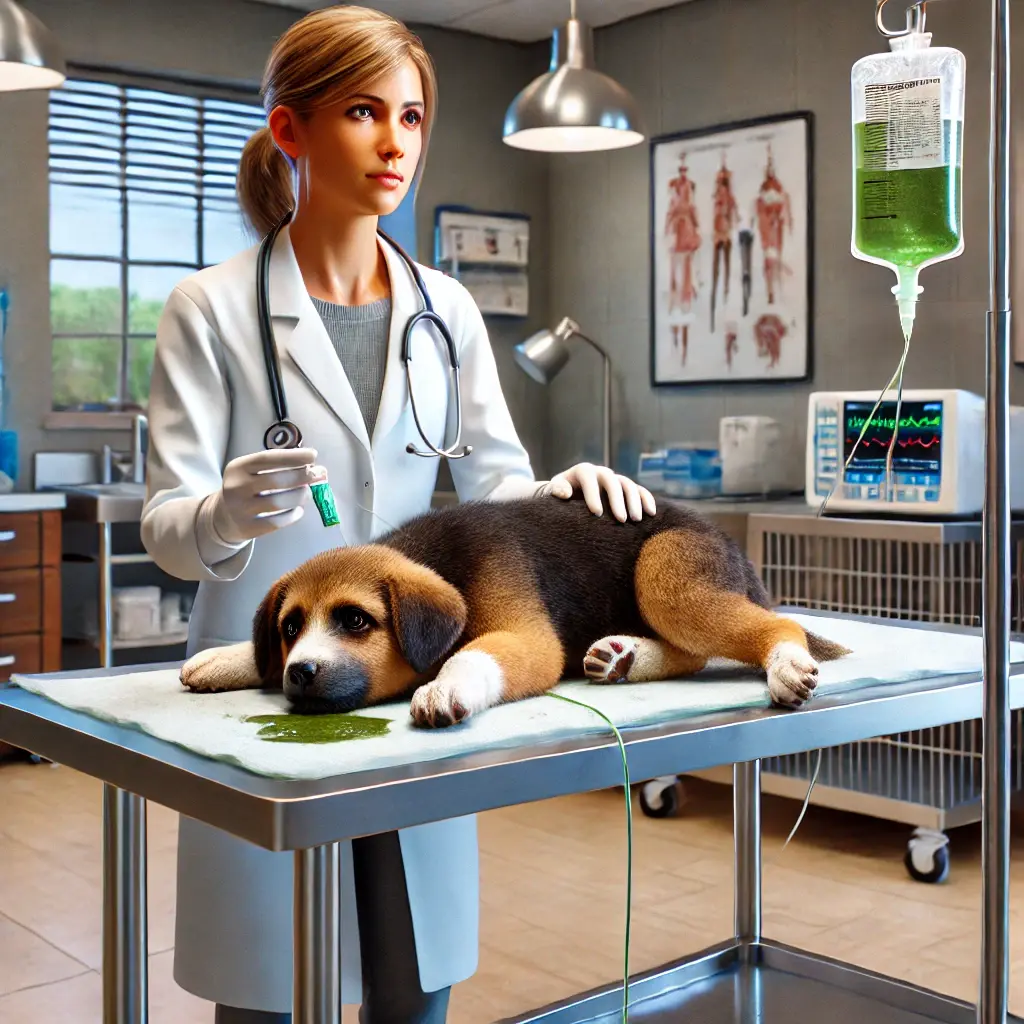Table of Contents
Looking for homemade dog food recipes that could save your pup from parvovirus? When your dog is fighting this dangerous infection, the right nutrition becomes a lifeline. Our vet-approved homemade recipes are specially designed to support recovery and healing. We’ll guide you through exactly which foods can help your dog bounce back and which ones could make things worse during this critical phase of treatment.
Understanding Canine Parvovirus: A Critical Overview
Parvovirus attacks your dog’s digestive system, making proper nutrition essential for recovery. This highly contagious virus primarily affects:
- Intestinal lining
- Immune system
- Ability to absorb nutrients
- Hydration levels

Key Symptoms of Parvovirus
Watch for these warning signs:
- Severe vomiting
- Bloody diarrhea
- Extreme lethargy
- Loss of appetite
- Dehydration
Life-Saving Homemade dog food Recipes for Parvovirus Recovery
1. Gentle Chicken and Rice Recovery Meal
Ingredients:
- 1 pound skinless, boneless chicken breast (protein for healing)
- 2 cups white rice (easily digestible carbohydrates)
- 4 cups low-sodium chicken broth (electrolytes)
- 1/2 cup plain pumpkin puree (fiber and digestive support)
- 1 tablespoon finely chopped carrots (vitamin A)
Instructions:
- Rinse rice thoroughly until water runs clear
- Boil chicken in plain water until internal temperature reaches 165°F (about 20-25 minutes)
- In a separate pot, cook rice using chicken broth instead of water
- Let chicken cool slightly, then shred into tiny, manageable pieces
- Mix 1 part shredded chicken with 2 parts cooked rice
- Fold in 2 tablespoons pumpkin puree per cup of mixture
- Add extra broth to create a soupy consistency for better hydration
Serving Size: Start with 1-2 tablespoons every 2-3 hours for a medium-sized dog Storage: Refrigerate for up to 2 days, freeze portions for up to 2 weeks
2. Healing Bone Broth Recipe
Ingredients:
- 2 pounds mixed beef or chicken bones (marrow bones are best)
- 2 tablespoons apple cider vinegar (helps extract minerals)
- 8 cups filtered water
- 1 carrot, roughly chopped (optional, for added nutrients)
- 1 celery stalk (optional, for minerals)
Instructions:
- Place bones in a large slow cooker
- Add apple cider vinegar and let sit for 30 minutes
- Add water and vegetables
- Cook on low for 24-48 hours for maximum nutrient extraction
- Strain thoroughly using a fine-mesh strainer
- Let cool completely and remove fat layer from top
- Dilute 50/50 with water for feeding
Serving: Start with 1-2 ice cubes worth, melted and lukewarm Storage: Freeze in ice cube trays for up to 3 months
3. Digestive Support Pumpkin-Chicken Blend
Ingredients:
- 1 cup plain pumpkin puree (not pie filling)
- 1 cup boiled, shredded chicken breast
- 1 cup cooked white rice
- 1/2 cup homemade bone broth
- 1 teaspoon ground flaxseed (optional, for omega-3s)
Instructions:
- Cook chicken until completely done, cool and shred finely
- Prepare rice using bone broth for cooking liquid
- Mix equal parts pumpkin, chicken, and rice
- Add additional bone broth to achieve a soft, moist consistency
- If using flaxseed, sprinkle and mix well
- Warm slightly before serving
Serving Size: 1-3 tablespoons every 4 hours depending on dog size Storage: Keep refrigerated for 3 days maximum
4. Gentle Turkey and Sweet Potato Mix
Ingredients:
- 1 pound lean ground turkey (93% lean or higher)
- 2 medium sweet potatoes, peeled and cubed
- 1 cup white rice
- 2 cups bone broth
- 1/4 cup plain pumpkin puree
- 1 tablespoon finely chopped parsley (optional, for vitamins)
Instructions:
- Cook ground turkey in a pan until fully done, breaking into tiny pieces
- Drain excess fat completely
- Steam sweet potatoes until very soft (about 15-20 minutes)
- Cook rice in bone broth until extra soft
- Mash sweet potatoes thoroughly
- Combine all ingredients, adding extra broth for moisture
- Mix until consistency is smooth and soupy
Serving Size: Initially 1 tablespoon per 10 pounds of body weight, 4-6 times daily Storage: Refrigerate up to 3 days, freeze portions for up to 1 month
Safe Ingredients That Support Recovery
Protein Sources
- Boiled chicken breast
- Lean ground turkey
- White fish (cod, halibut)
- Egg whites
Safe Carbohydrates
- White rice
- Sweet potatoes
- Plain pumpkin
- Cooked carrots
Ingredients to Avoid During Parvovirus Recovery
Never feed these during recovery:
- Raw or undercooked meats
- Dairy products
- Fatty foods
- Seasonings or spices
- Commercial treats
Hydration: The Key to Recovery
Homemade Electrolyte Solution Recipe
Mix:
- 1 cup warm water
- 1 teaspoon honey
- Pinch of salt
- Small amount of bone broth
Feeding Guidelines for Recovery
Portion Control
Start with:
- 1-2 tablespoons every 2-3 hours
- Increase gradually based on tolerance
- Monitor for vomiting or diarrhea
Signs of Improvement
Look for:
- Increased energy
- Better appetite
- Formed stools
- Regular urination
Natural Probiotic Support
Safe Probiotic Foods
Introduce gradually:
- Plain, unsweetened yogurt (tiny amounts)
- Kefir (when recovering)
- Fermented vegetables (late recovery)
Common Feeding Mistakes to Avoid
Don’t make these errors:
- Feeding large portions
- Adding new ingredients too quickly
- Using seasonings or oils
- Skipping vet consultation
Monitoring Recovery Progress
Track these daily:
- Food intake
- Energy levels
- Stool consistency
- Hydration status
- Weight changes
Frequently Asked Questions
How Long Should I Feed These Recipes?
Follow your vet’s guidance, typically 2-4 weeks during recovery.
Can Puppies Eat These Recipes?
Yes, but portions and ingredients must be adjusted for age and size.
When Can I Return to Regular Food?
Transition slowly over 7-10 days once recovery is confirmed by your vet.
Essential Recovery Tips
Remember:
- Start with tiny portions
- Feed frequently
- Maintain strict hygiene
- Keep water fresh
- Monitor progress closely
Disclaimer: This guide is for informational purposes only and should not replace professional veterinary care. Always consult your veterinarian before starting any new feeding regimen, especially during parvovirus recovery.
Last Updated: December 2024
[End of Post]
Keywords naturally integrated: parvovirus recovery, homemade dog food, dog parvo treatment, parvo recovery diet, healing recipes for dogs, natural parvo treatment




